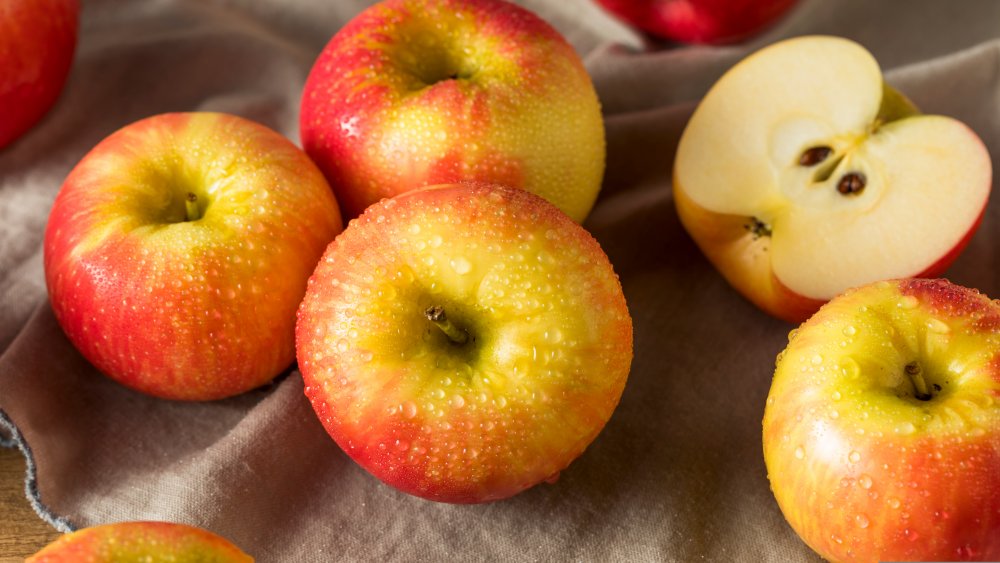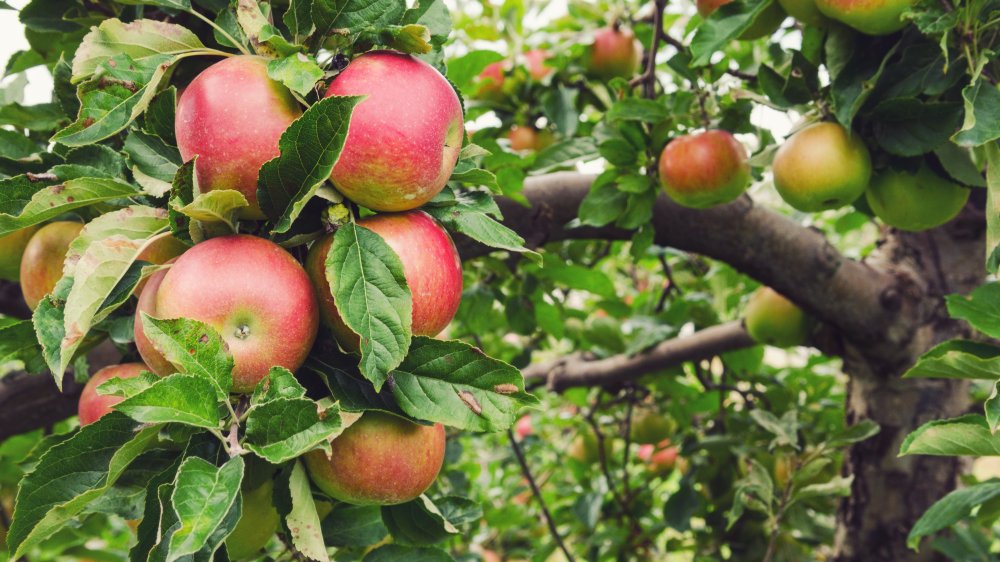The Real Reason Honeycrisp Apples Are So Expensive
There is something special about the first bite of a crunchy, sweet, juicy apple, even more so if it is a Honeycrisp apple. This modern day variety came about in 1960, thanks to the efforts and minds at the University of Minnesota. A cross between Macoun and Honeygold varieties, this apple was developed to stand up against the harsh temperatures of winter (via TC Times). But surprisingly, per Bloomberg, this apple really didn't take off until the 1980s. In fact, the variety almost never came to be after there were concerns that it was not the winter-hardy tree they had hoped for.
It was initially thrown out in 1977, but David Bedford joined the University of Minnesota Honeycrisp breeding team in 1979 and shared with Bloomberg that he found four clones of the breed that had survived the purge. Bedford decided to see what these leftovers could do. Those trees produced some of the tastiest apples ever. Fast forward to present day, and, as they say, the proof is in the pudding. Honeycrisps are so popular and beloved, apple eaters are willing to pay three times the price of other apples. But why are they so expensive?
Growing Honeycrisp apple trees has its challenges
At the end of the day, the expense comes because of the TLC and hard work required to grow the trees that yield these highly-favored fruits. Bloomberg spoke to a grower in Pennsylvania who said they have to teach the trees not to allow their branches to get too tall, too quickly. Sounds like a tall order. But if the tree is overgrown, its fruit won't get enough sunlight. Growers also noted that the fruit is vulnerable to bitter pit, which is a fancy way of saying the trees don't get enough calcium. To combat this, growers have to give them a supplement through the soil, or else the apples will develop unsightly brown spots. Additionally, birds are fans of the Honeycrisp, which means growers have to buy and install netting to prohibit the feathered fans from feasting.
The challenges don't end there. From picking to storing the Honeycrisp apple, there's a lot of time and money spent to cultivate and grow this fruit. After all that love and dedicated toil, only 55-60 percent of the crop will make it to our grocery store shelves. But because demand is so great, apple growers put in the extra effort to make the Honeycrisp part of their orchard. As Bloomberg noted, because this apple variety requires so much of growers, they will only continue to cultivate Honeycrisps as long it makes economic sense for their bottom line.

